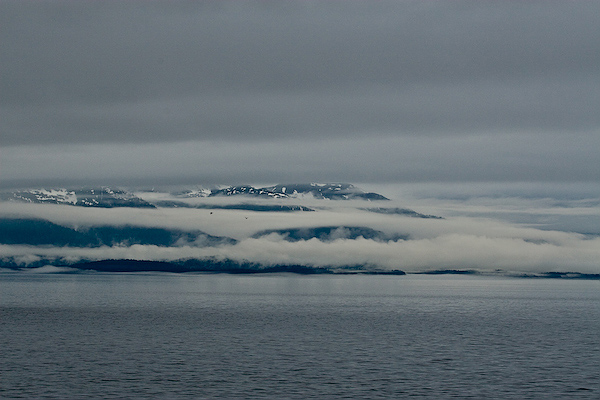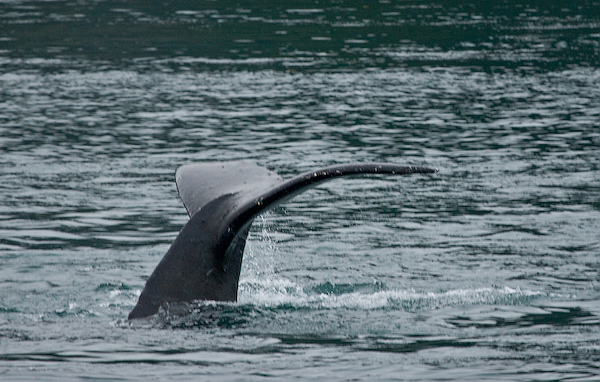Alaska's Inside Passage —
Day 5: Icy Strait, Inian Islands & Idaho Inlet
Sunrise: 0419 Sunset: 2201 Low tide: 0616 -2.0 ft. High tide: 1254 9.6 ft. ft. Low tide: 1758 3.6 ft.
Thursday, July 12, 2007
Icy Strait connects Cross Sound and the Gulf of Alaska with the waterways of Southeast Alaska's Inside Passage. This productive body of water lies north of Chichagof Island, and south of Glacier Bay National Park, and is a wonderful place to spot wildlife. Sea otters, humpback whales, seabirds, Steller sea lions, and both brown and black bears all inhabit the area.
Animal of the day: Sea Lion They are generally found in shallow waters of coastal areas of both with abundant food resources. A combination of overfishing, shooting by fishermen and climate change have presumably led to the decline of the Steller sea lion population in Alaska by as much as 80% since the 1970s. See also: Encounter with the Galapagos Sea Lion |
In the morning, we choose a Zodiac cruise in the Inian Islands to search for Steller sea lions, sea otters and bald eagles.

Why do otters always look like they wave to you?
Because they don't have blubber on their hands and feet. Keeping them out of the icy water helps them to keep warm.
















In the afternoon, we go ashore for walks at Fox Creek. This beautiful site is near the mouth of Idaho Inlet, on Chichagof Island and offers another chance to explore this lush temperate rainforest. During our leisurely walk with the naturalists we observe gorgeous, old-growth forest and many colorful wildflowers, including orchids.























Skunk cabbage.
There are no skunks in Alaska, but you'll find their familiar smell. The skunk cabbage is a major food source for brown bears during the early spring. Natives used the big leaves to fold them into cups, as our naturalist demonstrates.



















Not long after returning to the ship, another large group of whales is sited: Again, Humpbacks.



















Did you know?
In the early days of the fur trade, the pelt of one sea otter would pay the year's wages of three promyshleniki (Russian fur trappers).

 Sea lions are characterized by the presence of external ear pinnae or flaps, long front flippers, and the ability to walk on four flippers on land. Their range extends from the subarctic to tropical waters of the global ocean in both the northern and southern hemispheres with the notable exception of the Atlantic Ocean.
Sea lions are characterized by the presence of external ear pinnae or flaps, long front flippers, and the ability to walk on four flippers on land. Their range extends from the subarctic to tropical waters of the global ocean in both the northern and southern hemispheres with the notable exception of the Atlantic Ocean.